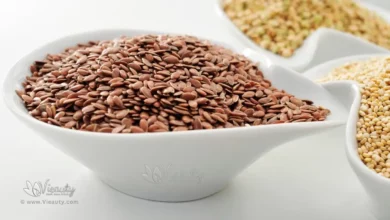Healthy Eating: How to Make Smart Food Choices
In our fast-paced world, maintaining a healthy lifestyle is paramount to overall well-being. One of the key pillars of a healthy lifestyle is making smart food choices. By understanding how to decipher nutrition labels, select wholesome ingredients, practice portion control, and make informed decisions about what we eat, we can fuel our bodies with the nutrients they need. In this article, we will explore various strategies and tips for making smart food choices to support a healthy and balanced diet.
Table of Contents
- Healthy Eating: How to Make Smart Food Choices
- Understanding Nutrition Labels
- Reading Ingredient Lists
- Portion Control and Serving Sizes
- Choosing Whole Foods
- Quality Protein Source
- Healthy Fats and Oils
- Reducing Added Sugars
- Mindful Eating
- Hydration and Beverage Choices
- Smart Snacking
- Meal Planning and Preparation
- Incorporating Variety and Balanced Meals
- Eating Out and Making Healthier Choices
- Recap
Healthy Eating: How to Make Smart Food Choices
Imagine waking up every morning with boundless energy, a clear mind, and a spring in your step. Sounds too good to be true? Think again! The secret lies in the power of healthy eating and making smart food choices. It’s not about depriving yourself or following strict diets; it’s about embracing a lifestyle that will transform not only your physical health but also your mental clarity and emotional well-being.

So get ready to embark on an adventure towards optimal nutrition – prepare yourself for a journey that will change the way you think about food forever!
Understanding Nutrition Labels
To make informed food choices, it is crucial to understand how to read and interpret nutrition labels. These labels provide valuable information about the nutritional content of packaged foods. Pay attention to key components such as calories, macronutrients (carbohydrates, proteins, and fats), and micronutrients (vitamins and minerals). By familiarizing yourself with these labels, you can make more conscious decisions about the nutritional value of the foods you consume.
Reading Ingredient Lists
In addition to nutrition labels, ingredient lists play a vital role in making smart food choices. They provide insights into the composition of a product. Take note of the ingredient hierarchy, with the most prevalent ingredient listed first. Be cautious of additives, preservatives, and artificial ingredients. Opting for foods with simple, recognizable ingredients is generally a healthier choice.
Portion Control and Serving Sizes
Portion control is essential for maintaining a balanced diet. Differentiate between portion sizes and serving sizes. Portion sizes refer to the amount of food you choose to eat, while serving sizes are standardized measurements provided on nutrition labels. Utilize visual cues such as comparing portion sizes to common objects or using measuring tools to maintain appropriate portion sizes for your dietary needs.
Choosing Whole Foods
Incorporating whole foods into your diet is a cornerstone of healthy eating. These include fresh fruits and vegetables, whole grains, and legumes. Whole foods are rich in fiber, vitamins, and minerals while being low in added sugars and unhealthy fats. Aim to include a variety of colorful fruits and vegetables in your meals and opt for whole grain options like quinoa, brown rice, and whole wheat bread.
Quality Protein Source

Protein is an essential macronutrient for the body. When selecting protein sources, choose lean meats, poultry, and fish. These options are generally lower in unhealthy saturated fats. If you follow a plant-based diet or prefer vegetarian options, explore alternatives such as legumes, tofu, tempeh, and plant-based protein powders.
Healthy Fats and Oils

Not all fats are created equal. Differentiate between good and bad fats when making food choices. Healthy fats, such as those found in avocados, nuts, and olive oil, provide essential nutrients and support heart health. Avoid or minimize consumption of unhealthy fats found in processed foods, fried foods, and trans fats.
Reducing Added Sugars
Added sugars can be detrimental to our health when consumed in excess. Be vigilant in recognizing hidden sugars in processed foods. Ingredients such as high-fructose corn syrup, dextrose, and maltose are common sources of added sugars. Instead, opt for natural sweeteners like honey or maple syrup, and reduce the consumption of sugary beverages and desserts.
Mindful Eating
Practicing mindful eating techniques can help cultivate a healthier relationship with food. Slow down and savor each bite, paying attention to taste, texture, and satisfaction. Listen to your body’s hunger and fullness cues, eating when hungry and stopping when satisfied. Mindful eating allows you to be more in tune with your body’s needs and promotes a healthier approach to food.
Hydration and Beverage Choices
Proper hydration is vital for overall health. Make sure to drink an adequate amount of water throughout the day. In addition to water, make wise beverage choices by avoiding sugary drinks and excessive caffeine. Opt for herbal teas, infused water, or homemade fruit juices to stay hydrated while avoiding unnecessary added sugars.
Smart Snacking
Snacking can be a part of a healthy diet when approached with mindfulness. Choose nutrient-dense snacks that provide sustained energy and essential nutrients. Opt for options like fresh fruits, raw nuts, yogurt, or homemade energy bars. Preparing your snacks in advance can help you avoid reaching for unhealthy processed options when hunger strikes.
Meal Planning and Preparation
Meal planning is a valuable strategy for making smart food choices. By planning your meals ahead of time, you can ensure a well-balanced and nutritious diet. Consider your dietary needs, schedule, and preferences when creating meal plans. Dedicate time to meal preparation, such as washing and cutting fruits and vegetables, cooking in batches, and storing leftovers for easy and healthy meals throughout the week.
Incorporating Variety and Balanced Meals

Aim for dietary variety by incorporating foods from different food groups. A balanced diet includes a mix of fruits, vegetables, whole grains, lean proteins, and healthy fats. Experiment with different recipes and cooking methods to keep your meals interesting and satisfying. By diversifying your food choices, you ensure a wider range of nutrients and flavors in your diet.
Eating Out and Making Healthier Choices
Eating out can present challenges when it comes to making healthy choices. However, with a few strategies, you can navigate restaurant menus and make smarter decisions. Look for healthier options, such as grilled or steamed dishes, salads, and vegetable-based sides. Ask for dressings and sauces on the side to control portion sizes and reduce added fats and sugars.
Recap
Making smart food choices is an integral part of a healthy lifestyle. By understanding nutrition labels, reading ingredient lists, practicing portion control, and selecting wholesome foods, you can prioritize your well-being and support optimal health. Remember to be mindful of your eating habits, hydrate properly, plan and prepare meals in advance, and maintain a balanced and varied diet. By incorporating these strategies into your daily routine, you can achieve long-term success in healthy eating and overall well-being.







Somebody essentially lend a hand to make significantly posts I might state That is the very first time I frequented your web page and up to now I surprised with the research you made to create this particular put up amazing Excellent job